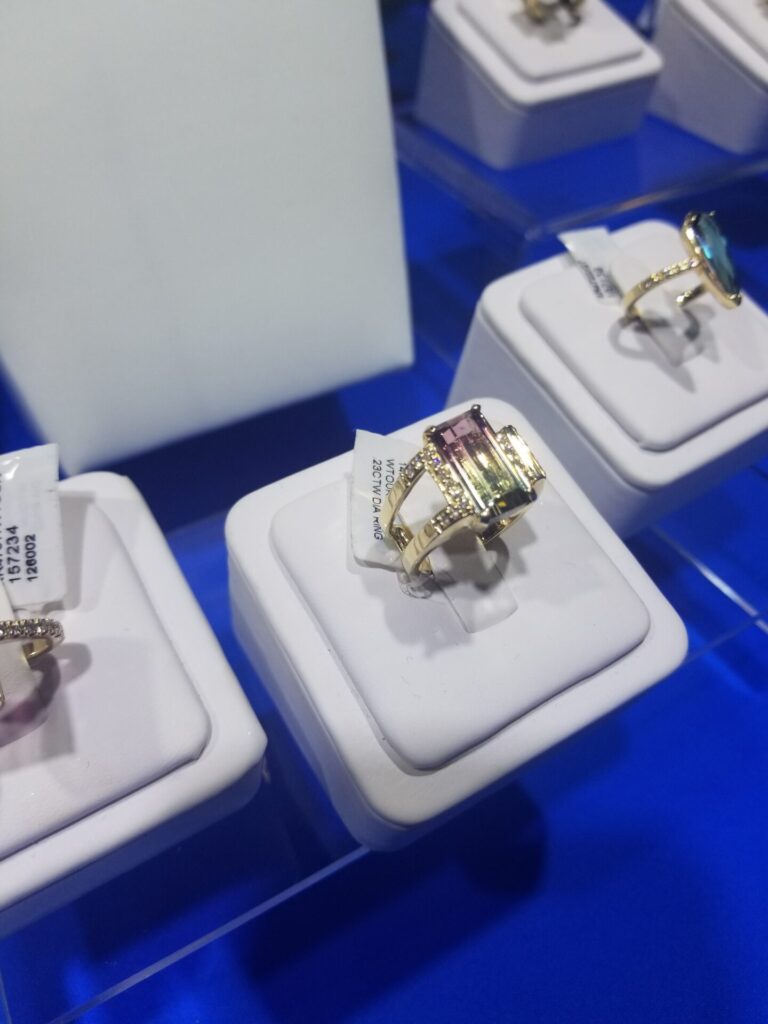Although tourmaline doesn’t have the famous play-of-color that opals do, it does have a staggering amount of colors, and can display a cat’s-eye effect. Let’s look deeper into this intriguing stone’s history!
Tourmaline’s name comes from the Sinhalese word toramalli, which means “stone with mixed colors,” because it often has multiple colors in one crystal.
There are many shades of tourmaline, such as rubellite (pink, red, orange-red), Paraiba (intense violet-blue found in Paraiba, Brazil), and chrome (intense green). One of the ‘rubies’ in the Russian crown jewels, the “Caesar’s Ruby” pendant, is actually rubellite tourmaline. They’re often mistaken for emeralds and sapphires as well.
Tiffany gemologist George F. Kunz brought attention to the gem in the later 1800s, using this fascinating stone to kickstart his career with the company. (Source: https://www.gemselect.com/other-info/tourmaline-market.php)
Supply has expanded in the past hundred years, since new sources were discovered around the world.
Tourmaline has a hardness of 7 to 7.5 on the Mohs scale, and a fair toughness. It’s sensitive to high temperatures, which can cause color changes.
The ultrasonic and steam cleaners can be risky for tourmaline, because it can be treated with methods like heat and irradiation to change its color. Warm, soapy water is the best way to clean this stone!

